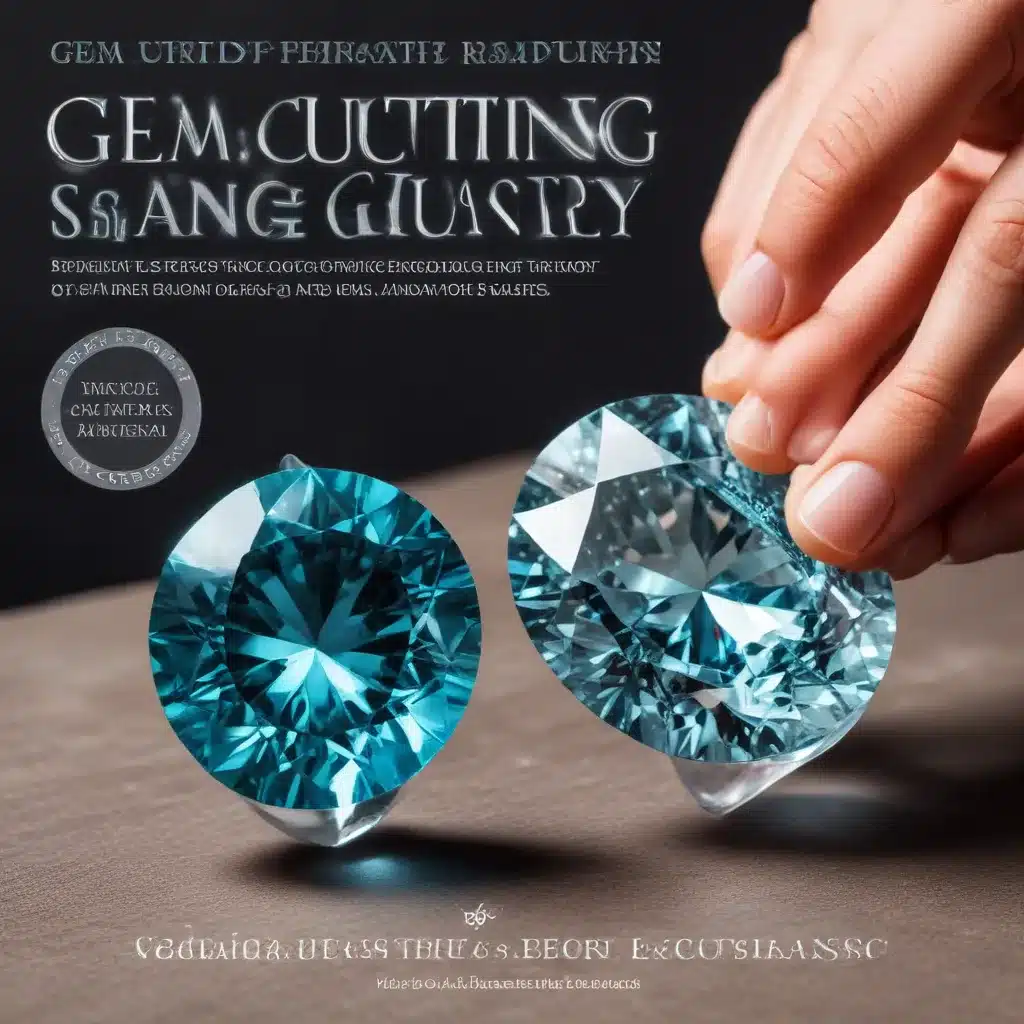
The art of gem cutting is a captivating intersection of scientific precision and creative flair. Gemstone cutters, wielding specialized tools and a keen eye, transform raw crystalline structures into objects of breathtaking beauty and fire. This mastery involves unlocking a gem’s innate optical properties, coaxing out its radiant brilliance, and sculpting it into a work of wearable art.
Crystalline Structures and Properties
At the heart of gem cutting lies an understanding of a gemstone’s fundamental crystalline nature. Each variety, from diamond to emerald to ruby, possesses a unique atomic arrangement that dictates its optical behavior and physical characteristics. The cutter’s challenge is to leverage these properties to maximum effect.
Factors such as refractive index, dispersion, and Mohs hardness all play a crucial role in determining how a gemstone will interact with light and withstand the rigors of wear. Mastering these principles allows cutters to make informed decisions about the optimal cutting style and proportions for a given material.
Cutting Angles and Symmetry
The precise placement of a gemstone’s facets is the hallmark of an exceptional cut. Cutters must calculate the ideal crown and pavilion angles, as well as the positioning of the table and girdle, to ensure maximum fire and scintillation. This delicate balance is achieved through an in-depth understanding of critical angles and the behavior of light within the gem.
Symmetry is paramount, as any deviation in facet alignment can lead to light leakage and a dulled appearance. The most skilled cutters employ advanced techniques, such as indexed cutting and mathematical optimization, to ensure the perfect arrangement of facets.
Tools and Techniques
The gem cutter’s workshop is a realm of specialized equipment and time-honored methods. From the faceting machine with its precise angle and rotation controls to the polishing lap coated in diamond powder, each tool plays a vital role in the transformation from rough to refined.
Techniques like dopping, pre-shaping, and fine polishing require dexterity, patience, and an intuitive feel for the material. The cutter must also master the nuances of lubrication, temperature control, and safety protocols to ensure the integrity of the gem.
Proportions and Symmetry
The quest for exceptional brilliance hinges on the precise execution of cutting proportions. Too deep or too shallow of a pavilion can result in a phenomenon known as “windowing,” where light escapes the stone prematurely, robbing it of its luminous sparkle.
Skilled cutters meticulously calculate the critical angles for each gem variety, ensuring that every facet is positioned to maximize light return and fire. This attention to detail is what separates a mediocre cut from a masterpiece.
Polish and Finish
The final step in the cutting process is the polishing stage, where each facet is brought to a mirror-like sheen. This high-luster finish enhances the gem’s scintillation and brilliance, allowing light to dance across its surfaces in a captivating display.
Cutters employ specialized polishing techniques and abrasives to achieve this level of refinement. The goal is to create a flawless, symmetrical appearance that showcases the stone’s natural beauty to its fullest extent.
Maximizing Brilliance
The holy grail of gem cutting is the ability to amplify a stone’s optical performance. This involves not only perfecting the cut proportions but also understanding the nuances of dispersion, luster, and internal reflections.
Skilled cutters may employ specialized techniques, such as scintillation enhancement or facet optimization, to maximize a gem’s fire and sparkle. The result is a captivating interplay of light and color that mesmerizes the observer.
Lapidary Workshop Essentials
The gem cutter’s workshop is a dynamic environment, filled with an array of specialized equipment and tools. From the faceting machine with its precise angle controls to the polishing lap coated in diamond powder, each component plays a vital role in the transformation from rough to refined.
Proper maintenance, lubrication, and temperature control are essential to ensure the integrity of the gems and the longevity of the equipment. Strict safety protocols, such as the use of eye protection and proper ventilation, are also paramount in the lapidary workshop.
Gemstone Rough Evaluation
Before the cutting process can begin, the cutter must carefully examine the rough gemstone to determine its potential. Factors such as inclusions, color zoning, and the natural shape of the crystal all play a role in dictating the final cut.
The goal is to maximize the yield and maintain the weight of the rough while creating a beautiful and symmetrical gemstone. This process requires a keen eye, extensive experience, and a deep understanding of each gem’s unique properties.
Historical Cutting Traditions
The art of gem cutting has a rich and storied history, with techniques and styles that have evolved over centuries. From the classical European cuts of the Renaissance era to the intricate Asian designs, each tradition has its own unique aesthetic and technical nuances.
Skilled cutters often study these historical styles, seeking to revive and reinterpret them for the modern era. This blend of tradition and innovation is what gives the world’s finest gemstones their timeless allure.
As you embark on your journey through the captivating world of gem cutting, remember that mastery is not achieved overnight. It is a lifelong pursuit, where each cut, each polish, and each moment of inspiration brings you closer to the creation of exceptional brilliance. Embrace the science, the artistry, and the timeless legacy of this ancient craft – for in doing so, you unlock the true magic of the gemstone.
For more information on Shelby Gem Factory’s commitment to exceptional gem cutting and jewelry design, please visit https://www.shelbygemfactory.com.

